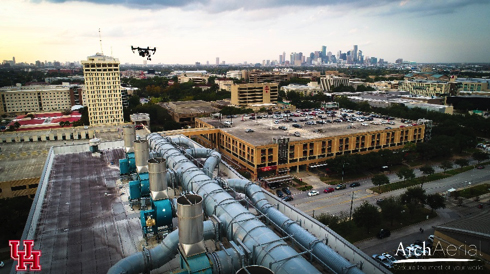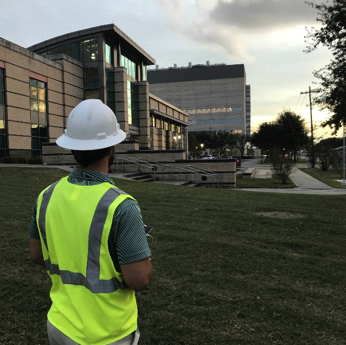
By Destinie Holiday
As part of the followup from major weather incidents, UH Facilities assesses possible building damage. Hurricane Harvey was no exception.
Soon after Harvey swept through Houston in August, building interiors, facades and roofs were reviewed and then the damage noted and put in order of priority. Assessments began as early as September and ended in January. Over 150 buildings were completed during this process.
The fascinating part to this standard protocol was the introduction of unmanned aerial vehicles, also known as drones. This was the first time drones were used on campus in a weather-related aftermath assessment process.

The advantage they have is they are a much safer alternative to using a man lift or walking roofs that have pitched angles. There are no potential harness issues or sidewalk closures. Drones are also capable of recording patterns using a pre-recorded flight pattern. This allows the operator to analyze the infrared images while in flight without having to concentrate on piloting. The infrared camera picks up heat from moisture trapped beneath the roofing membrane and then the image is displayed and recorded in multi-color spectrum based on temperature.
Drones also are capable of vertical wall and window inspections. This allows close-up views of potential water infiltration points within a building envelope system, which normally would have to be performed either from a man lift or a window cleaning rig. It is the hope of UH Facilities to be able to use this feature in the future.
Just like the pictures seen on the news from Hurricane Harvey, a drone picture will probably never fully grasp the full scope of damage but it definitely helps give more insight. Touching the roof surface is still needed to write a complete damage report.